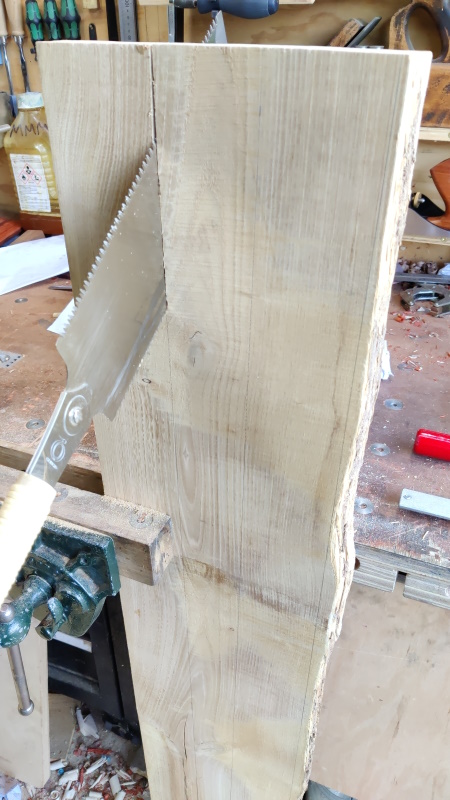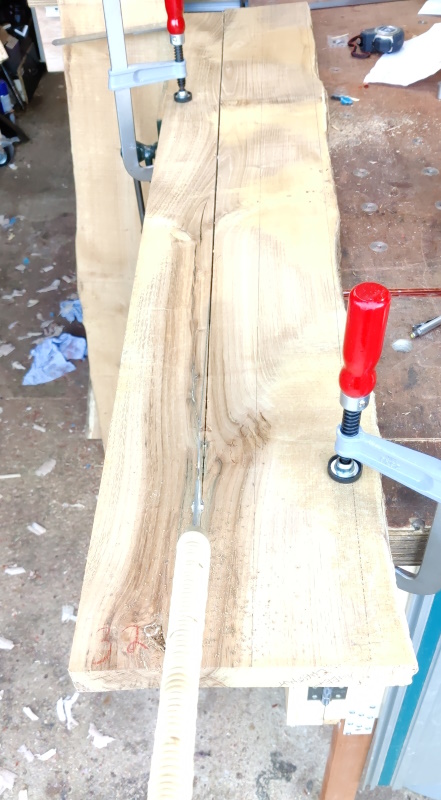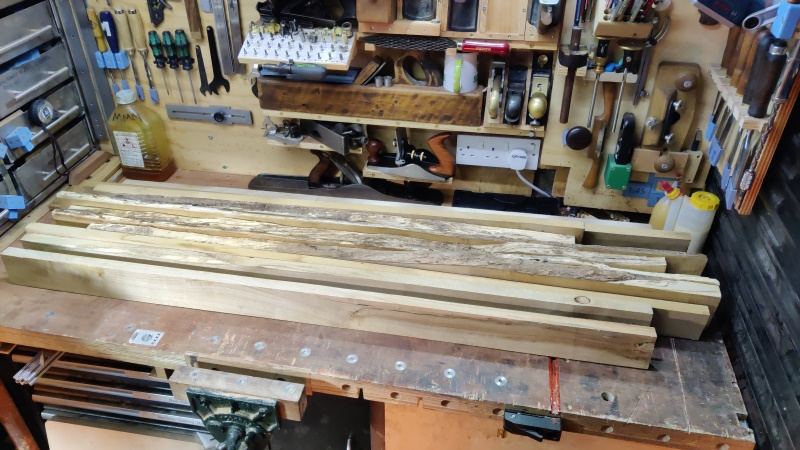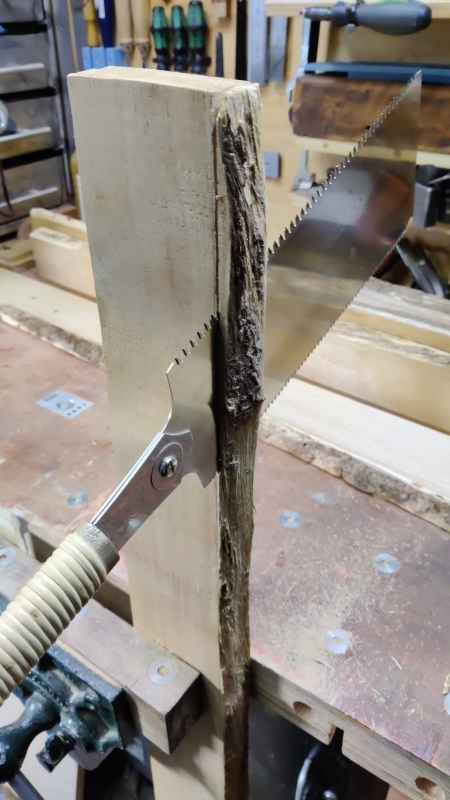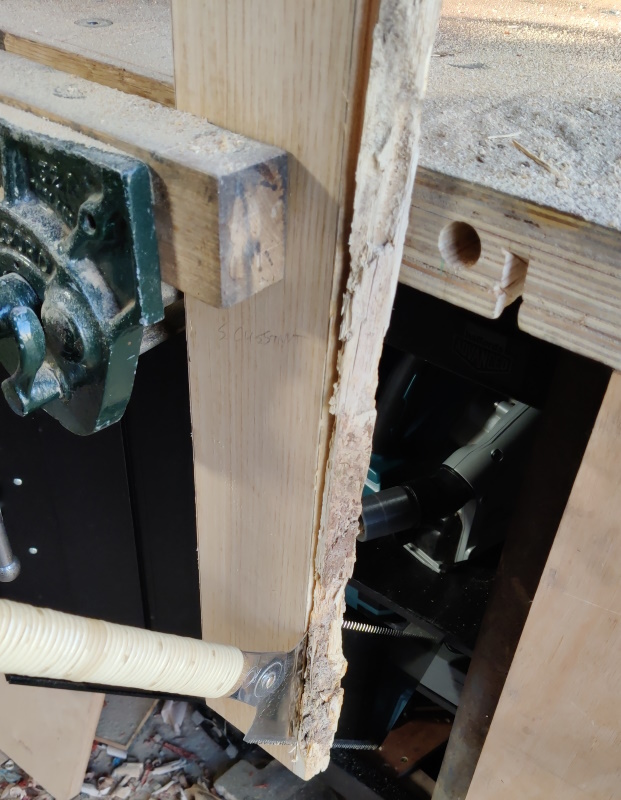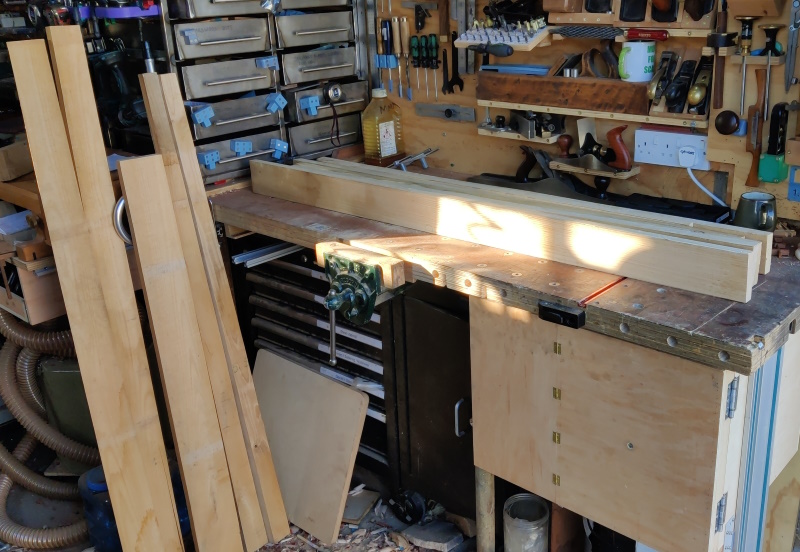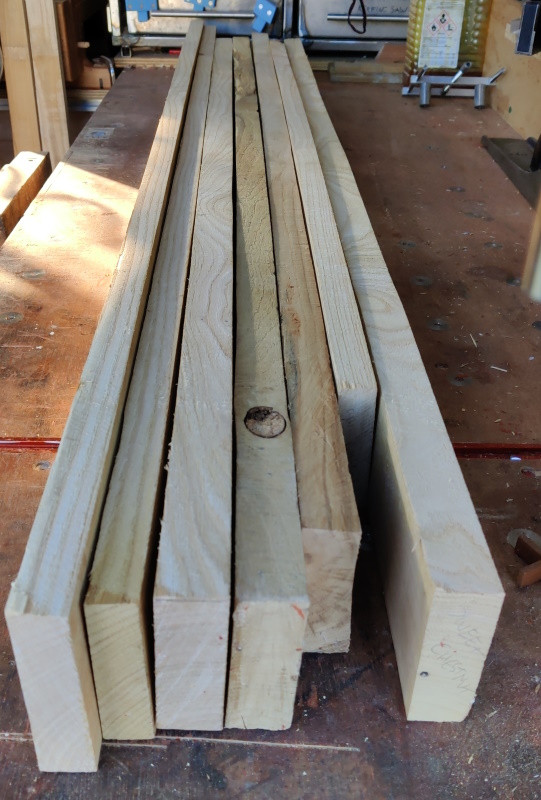Travel Tool Chest & Workbench Build Process
Page 9 of 144
Posted 23rd January 2023
I've been very quiet regarding this project for quite a long time, but believe it or not, I haven't given up on it. I've just been pondering the design quite a bit and still haven't quite reached any conclusions.
Anyway, after dillying and dallying and never quite concluding how best to do things, I decided yesterday to just get started and figure things out as I go. Off the racks came the bits of sweet chestnut I'd bought from Wentwood last year and I decided to cut them up a bit and see what happens. I had a few pieces, each a bit under 3 m long and about 200 mm wide. They weren't especially straight and each had a substantial bow across the width. Rather than trying to flatten the pieces out, I figured it would be best to cut them up lengthways into three pieces, each of which would be somewhere near flat and in some cases the outer two pieces would be close to quarter sawn, which might be beneficial I guess.
I started by cutting all the pieces in half to make them a bit more manageable (at the very least, they'd fit on my bench that way!). That gave me a small pile of pieces between 1.3 and 1.5 m long.
Then I got my extra large (300 mm) ryoba (seen on the left of this image next to the "normal" size one) and started ripping the planks into pieces. After pondering on a few different ways of doing this, I settled on holding the wood vertically in the bench vice:
There was a bit of wobble in the board at the start of the cut, where it's about 500 mm above the bench, but once I was down to about 300 mm above the bench, the cut proceeded very quickly. If I had any sense, I probably would have put my portable workbench on the bench to lift the clamping point up a bit higher. Well, if I really had any sense, I would have used the bandsaw, but that's another story...
Working in the vice like that seemed to be a good choice as it kept my back in a comfortable position and after spending a few hours cutting yesterday I didn't have even the slightest twinge, which is a bit of a luxury for someone of my height (1.98 m / 6'6").
As I cut, I moved the pieces further up in the vice and very quickly ripped along the length. That big ryoba works really well for this sort of cut. In the past I'd mostly used it for resawing (which wasn't fun by any stretch of the imagination), but that's a job I'll definitely do in the bandsaw in future.
When the workpiece hit the ceiling, I could go no further in the vice, so for the first "batch" of boards that I cut, I clamped them to the bench and the vice (with the vice out a bit so the cut line was over the edge of the bench) and completed the cut like that (in some cases I also squatted on the floor so I could pull down rather than pull up to cut):
That was less comfortable for my back, but it worked okay. For someone at my level of experience and skill (which is to say, not very much), it was really satisfying to get to the end of all of the 1.5ish metre cuts I did within a millimetre or two of the line.
After a couple of hours sawing away with the garage door wide open but without feeling the cold at all (unsurprisingly consider what I was doing), I ended up with a pile of planks that looked like this:
Some of them are straight but some (the ones from the middle of the planks) have a taper on them due to the shape of the source planks and the fact I wanted the edge pieces to be straight.
This morning I got on with remove the edges from the 5 planks that still had bark on. Again this proceeded fairly quickly and mostly in the same way:
The only difference with these ones was that I decided to saw the last bit underneath the bench so I could continue to look after my back and stand in a relatively straight manner:
The result: a pile of straight planks on the bench and a stack of slightly tapered ones leaning up against the portable workbench...
... the next step is to decide what to do with this lot:
They're a mixture of completely unplaned and planed on one side but bowed a bit since planing. None of them sit on the bench completely flat in any orientation.
One option now is to get them sitting somewhere near flat and then feed them through the thicknesser. That would be quick, easy and very much in keeping with my skill level, but would be noisy, dusty and unless I stop shy of the thickness I want, would waste a bit at each end of each plank as a result of the snipe.
Another option is to do everything by hand, in which case I'll probably cut them to length first (as I won't have to worry about snipe) so I've got easier bits to manage (and less to throw away if I completely c*ck up the hand planing!)
I think I'll probably start by doing one or two pieces by hand and then deciding what to do for the rest based on how it goes. Some of the pieces are a lot thicker (30 mm vs about 23 mm), so they may go through the thicknesser to get rid of the bulk, even if I do the last bit by hand to be sure of no snipe.
Do I get any awards for the most boring collection of photos in any single forum post?
Page 9 of 144
This website is free and ad-free, but costs me money to run. If you'd like to support this site, please consider making a small donation or sending me a message to let me know what you liked or found useful.

 Return to main project page
Return to main project page